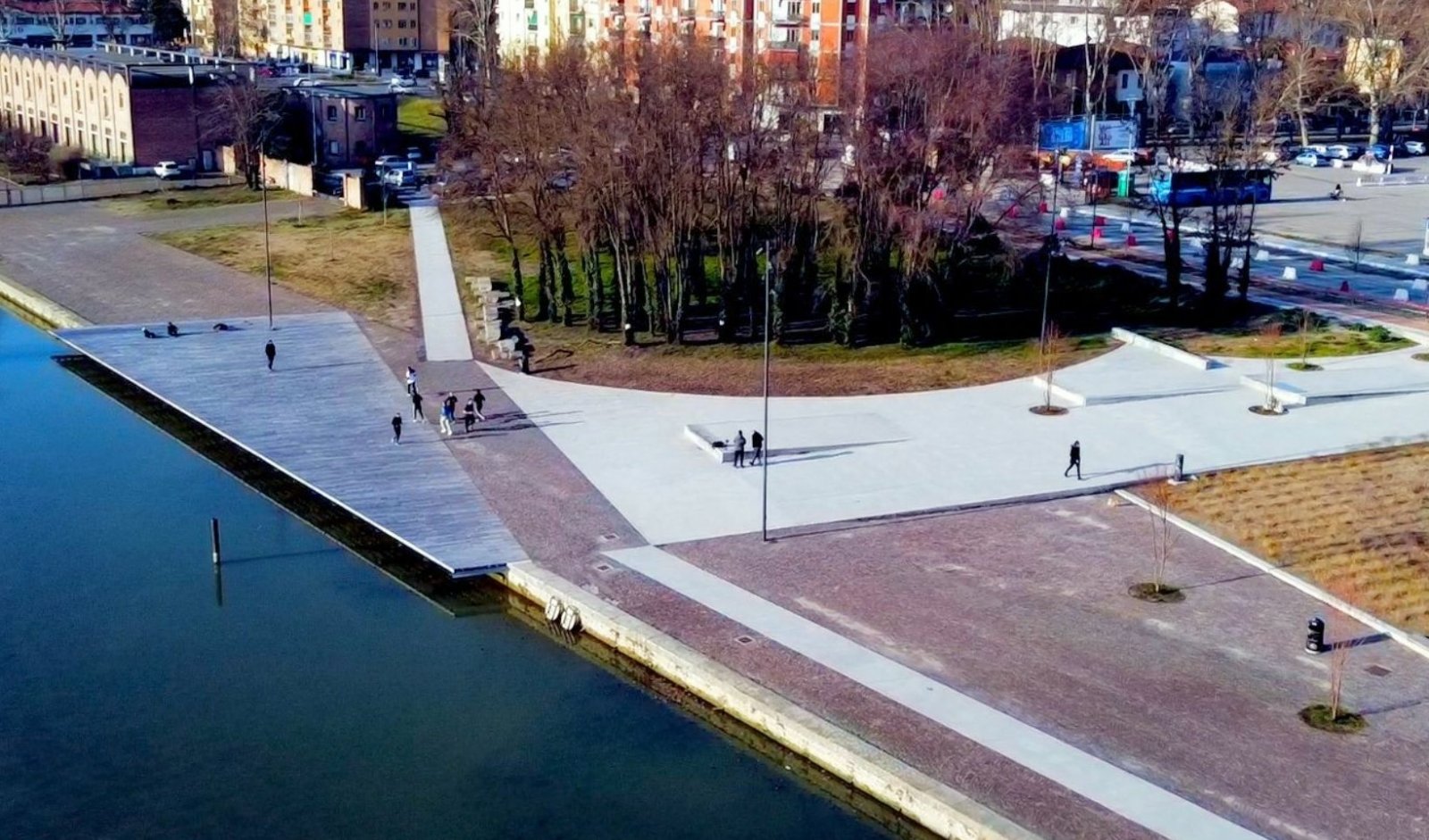You might also be interested

"The immense greatness of water, therefore, is so great that it is almost inexplicable, and is contained in three places: in the bowels of the earth, above it and above the heavens".
So wrote Giovan Battista Aleotti, the influential hydraulic architect of Alfonso II d'Este, in his Hidrologia.
Discover Ferrara through water and Reinassance
Renaissance in Ferrara is inextricably linked to the city's connection with water.
Water was for centuries either the engine around which the city's commercial and cultural relations revolved.
Traces of Ferrara's inextricable connection with water can be found in various corners of the city. Would you like to discover them with us and retrace the city's history from a different point of view?
Let us start this itinerary from the present, or at least from a point closer to the present than the other places we will encounter along this route.
THE MONUMENTAL AQUEDUCT
Po is the great river that gives life to the system of waterways that made the development of Ferrara possible. The river, colossal and imposing, has been the protagonist of various events throughout the city's history.
The monumental aqueduct is a true twentieth-century homage to the great river and the myths surrounding it.
A living and busy square where history intersects with storytelling. A perspective to be admired and photographed.
Before starting your walk to the next stage of the route, you can enjoy a coffee or an ice cream near the square.
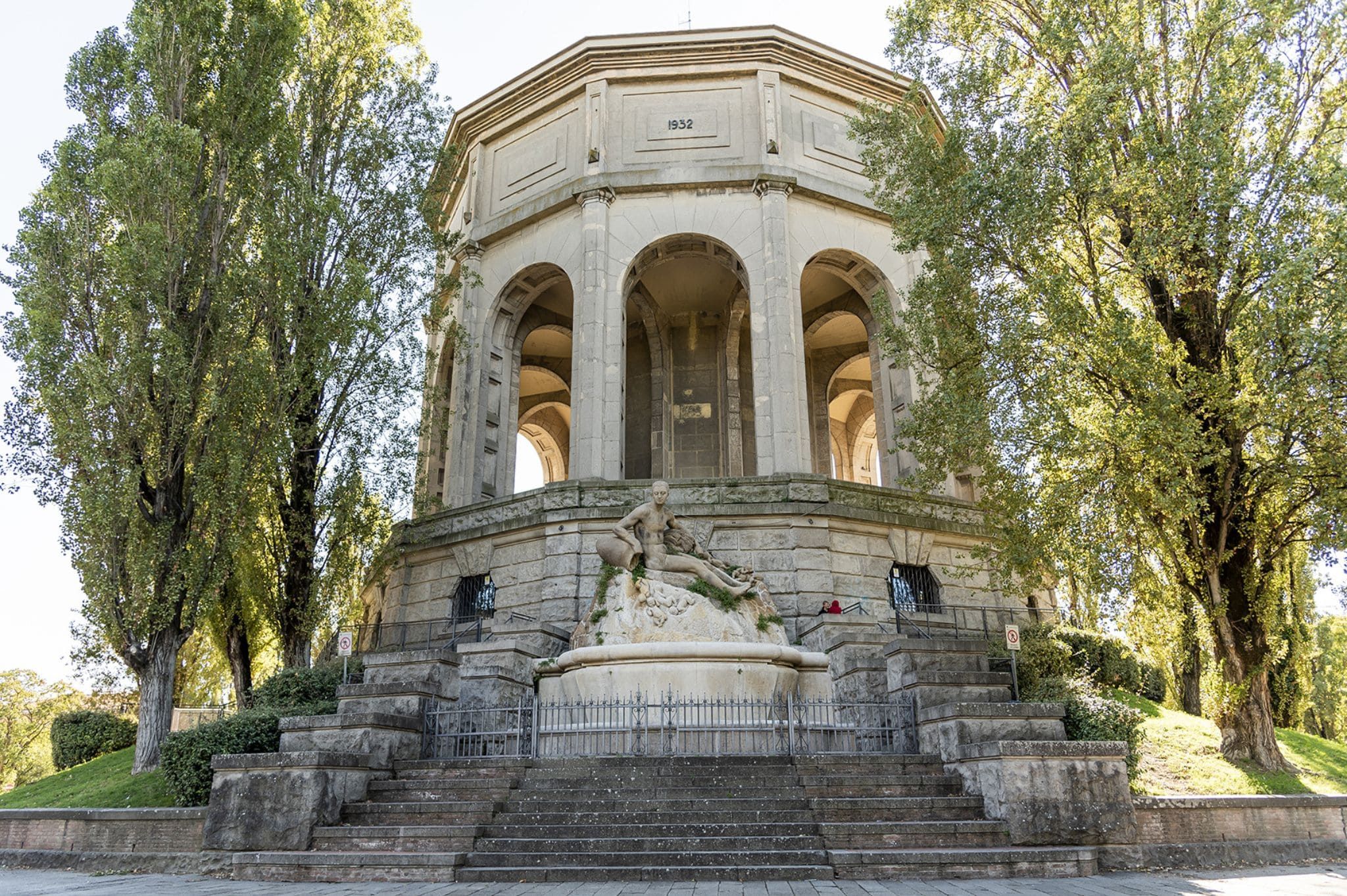
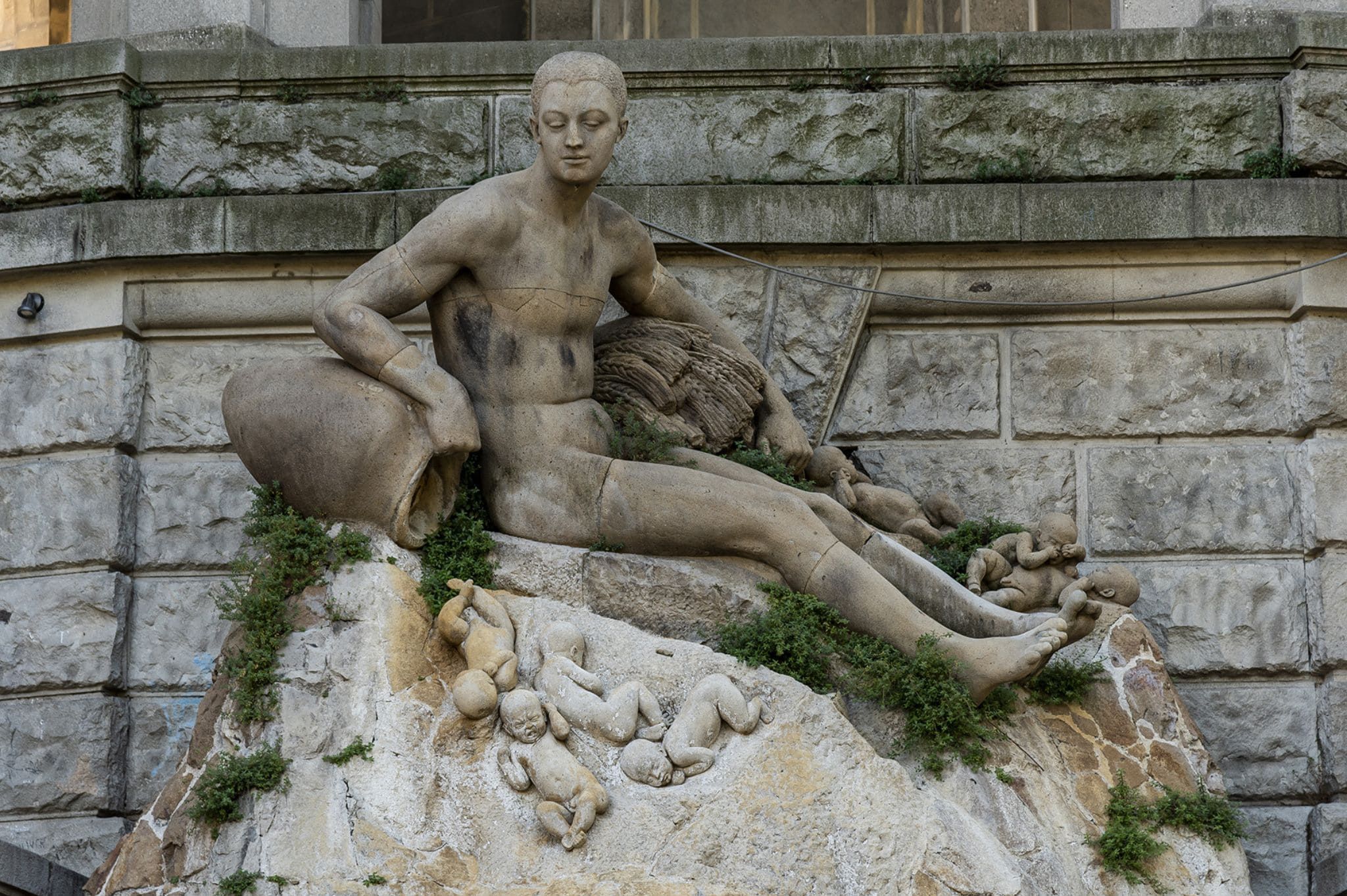
ALONG THE DARSENA
Here you are, after a few steps, in one of the most stunning places in the city. Ferrara's Darsena is a perfect spot to take a breather, enjoy a leisurely stroll and admire beautiful sunsets.
An undiscovered spot from where you can take wonderful photographs. Towards summer, the area fills up with fantastic events: music, food and much more!
From here you can embark to follow the course of the river or continue your journey on foot towards the discovery of the city's first settlement: the ancient Borgo di San Giorgio.
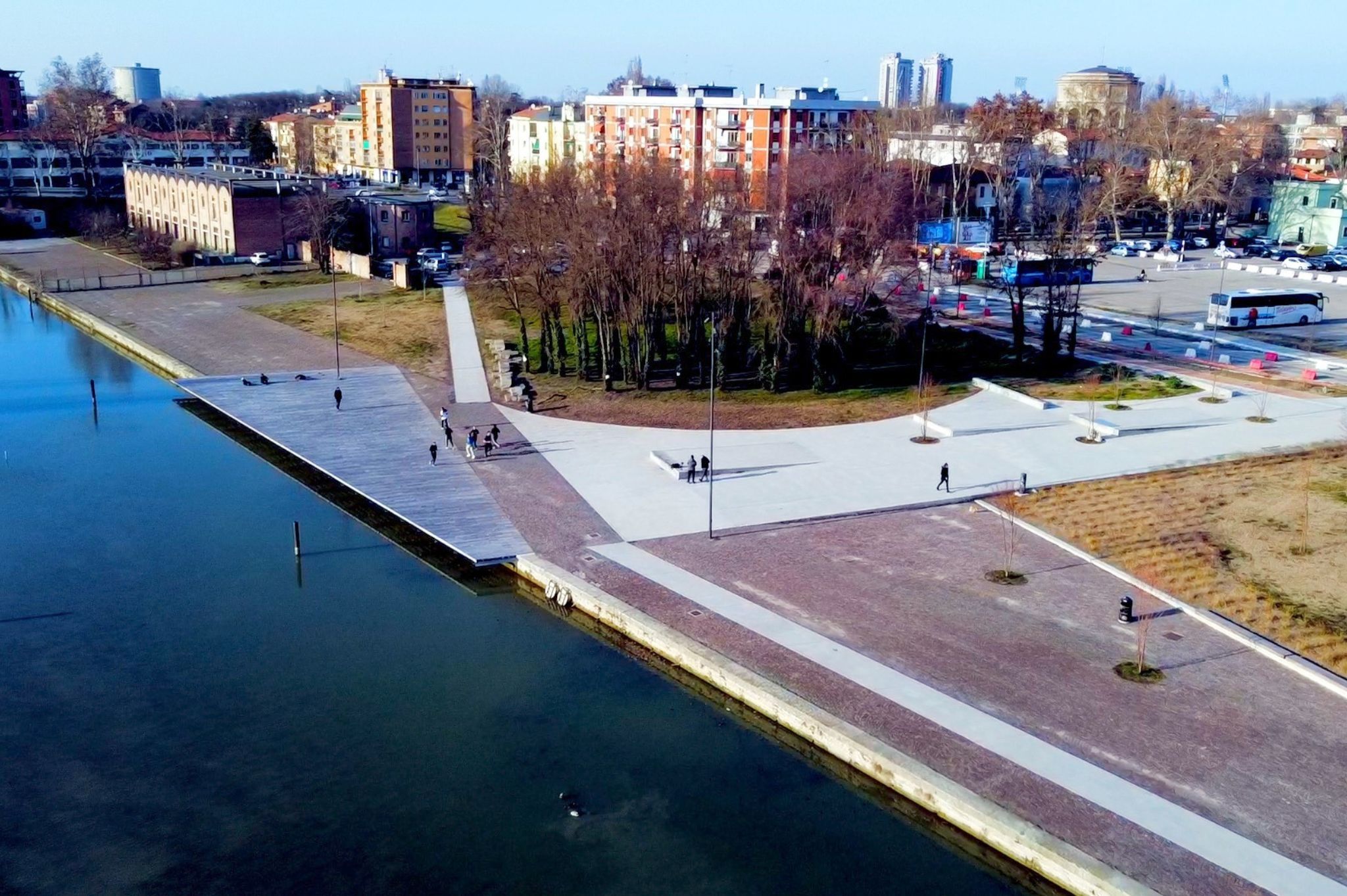
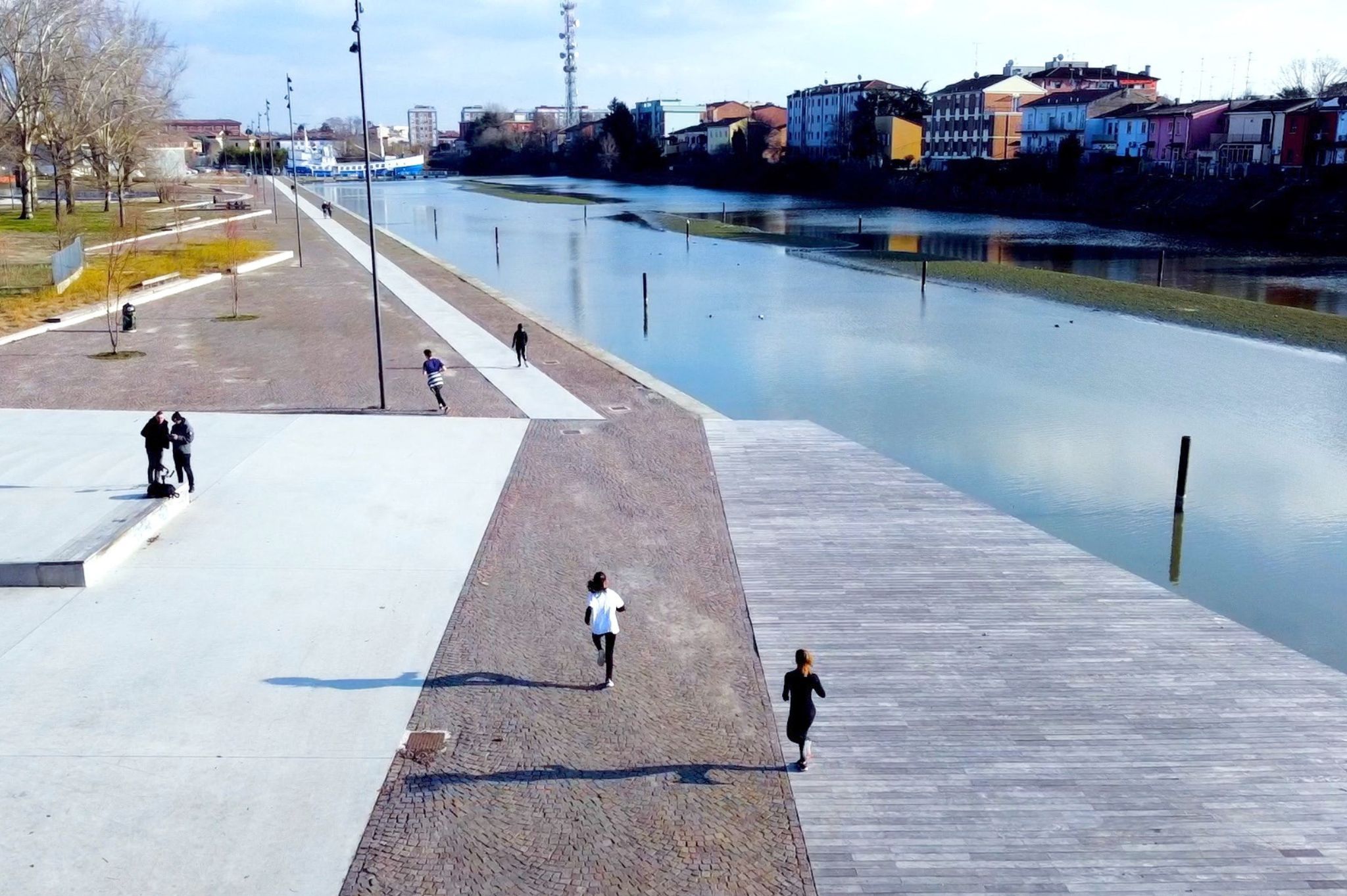
SAN GIORGIO FUORI LE MURA
The first thing that will jump out at you is the bell tower of what was once the city's cathedral.
Basilica di San Giorgio fuori le mura stands in what was once the city's first settlement. Retracing the Po di Volano towards the old town, on foot or by bicycle, will open up a surprising panorama of the city.
From San Giorgio we continue following in the footsteps of the water towards via xx settembre: here you will find one of the city's most impressive palazzi.
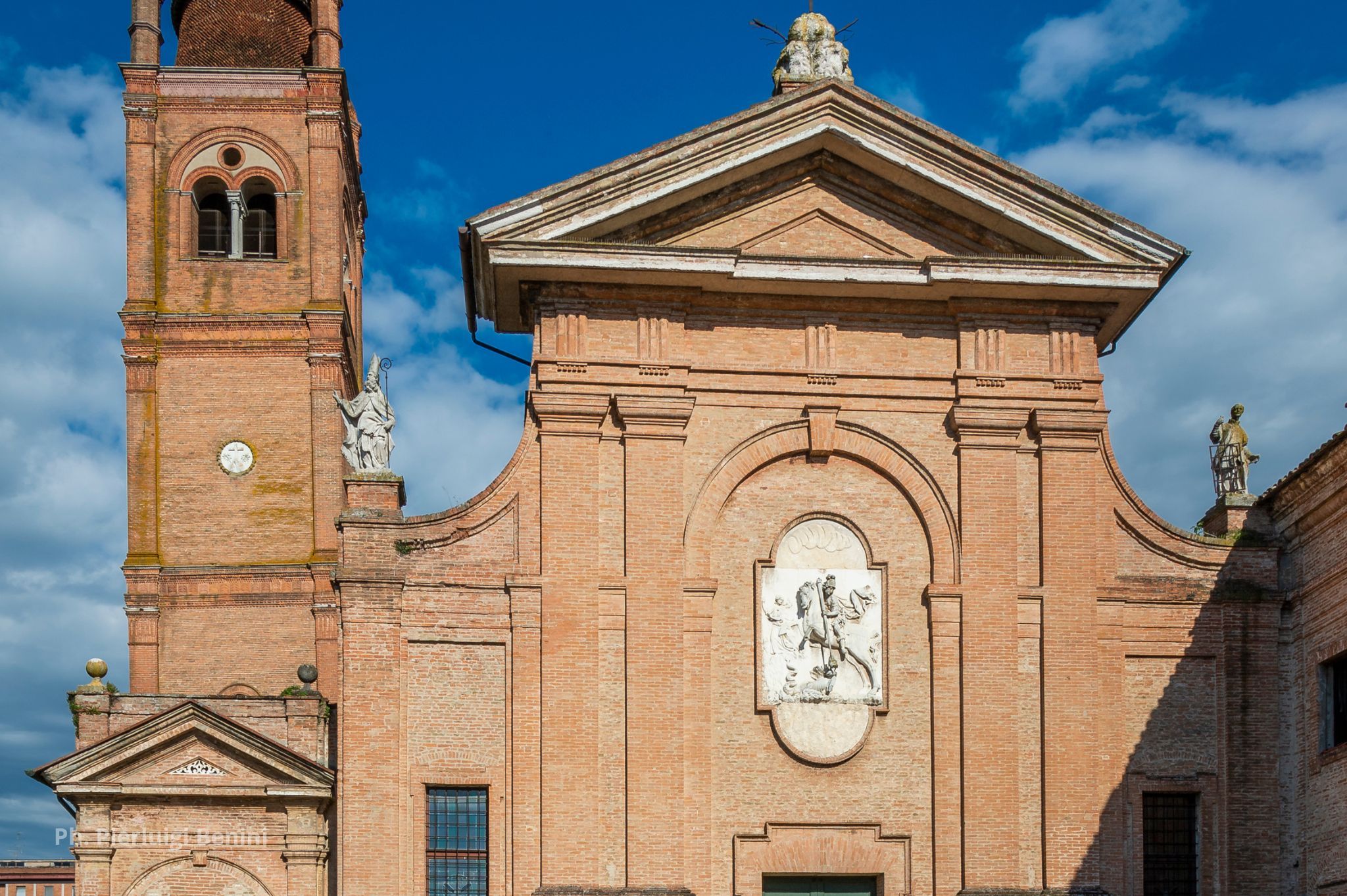
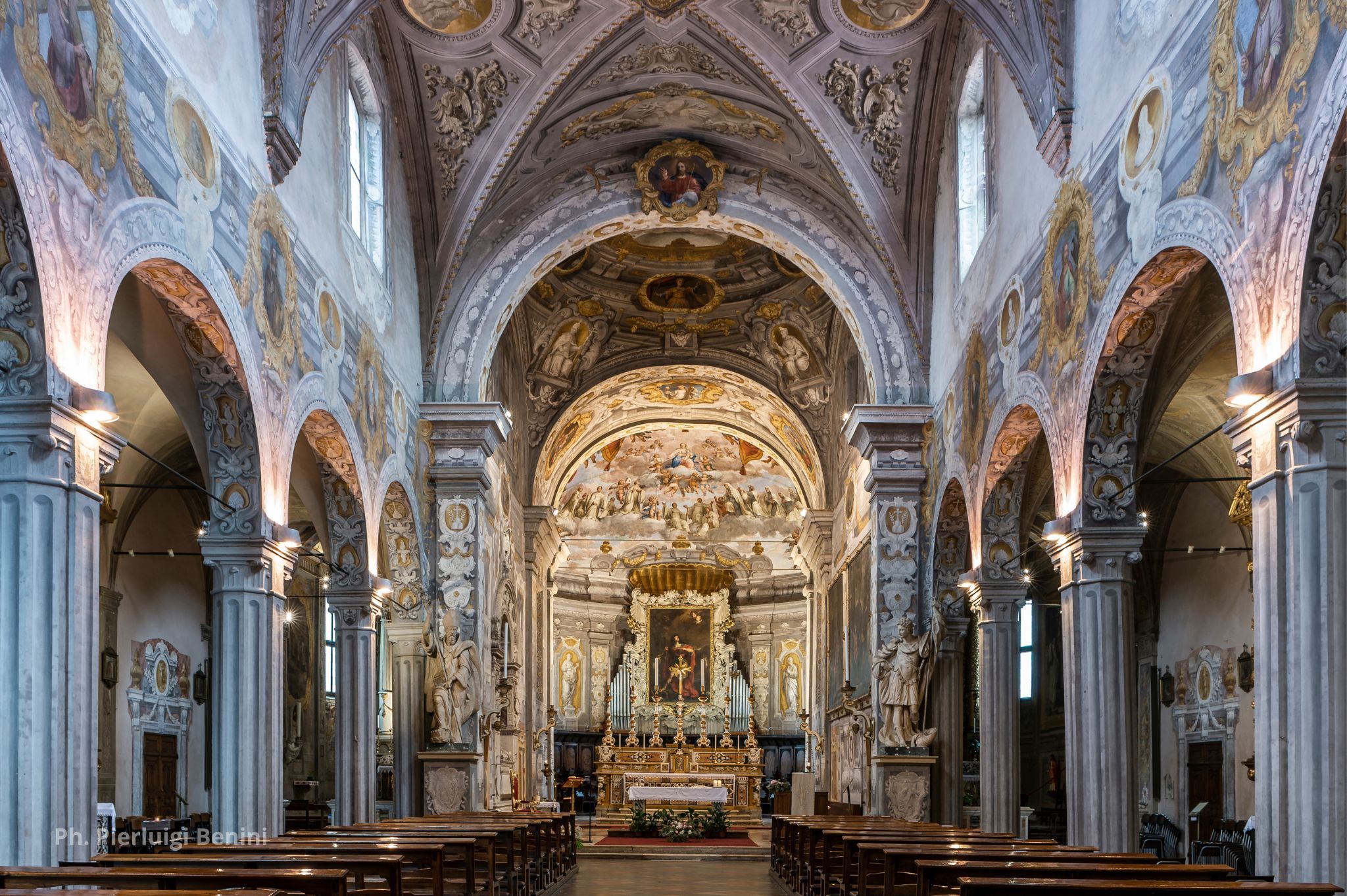
PALAZZO COSTABILI
Palazzo Costabili is now home to the National Archaeological Museum, which is housed within the walls of this building of great historical and artistic interest. Among the finely frescoed rooms, of which the Treasure Room with its frescoes by Benvenuto Tisi, known as 'Il Garofalo', is particularly striking, you will find artifacts from the ancient Etruscan city of Spina, which stood a few kilometers from Ferrara.
Spina was the hub of a great commercial and cultural exchange. An exchange that saw water at the center of communication. Today, to mark the centenary of the discovery of the Etruscan city, the museum is hosting the Spina 100 exhibition.
Leaving the palace, just a 6-minute walk away is another important building, a true Delizia now integrated into the city grid.
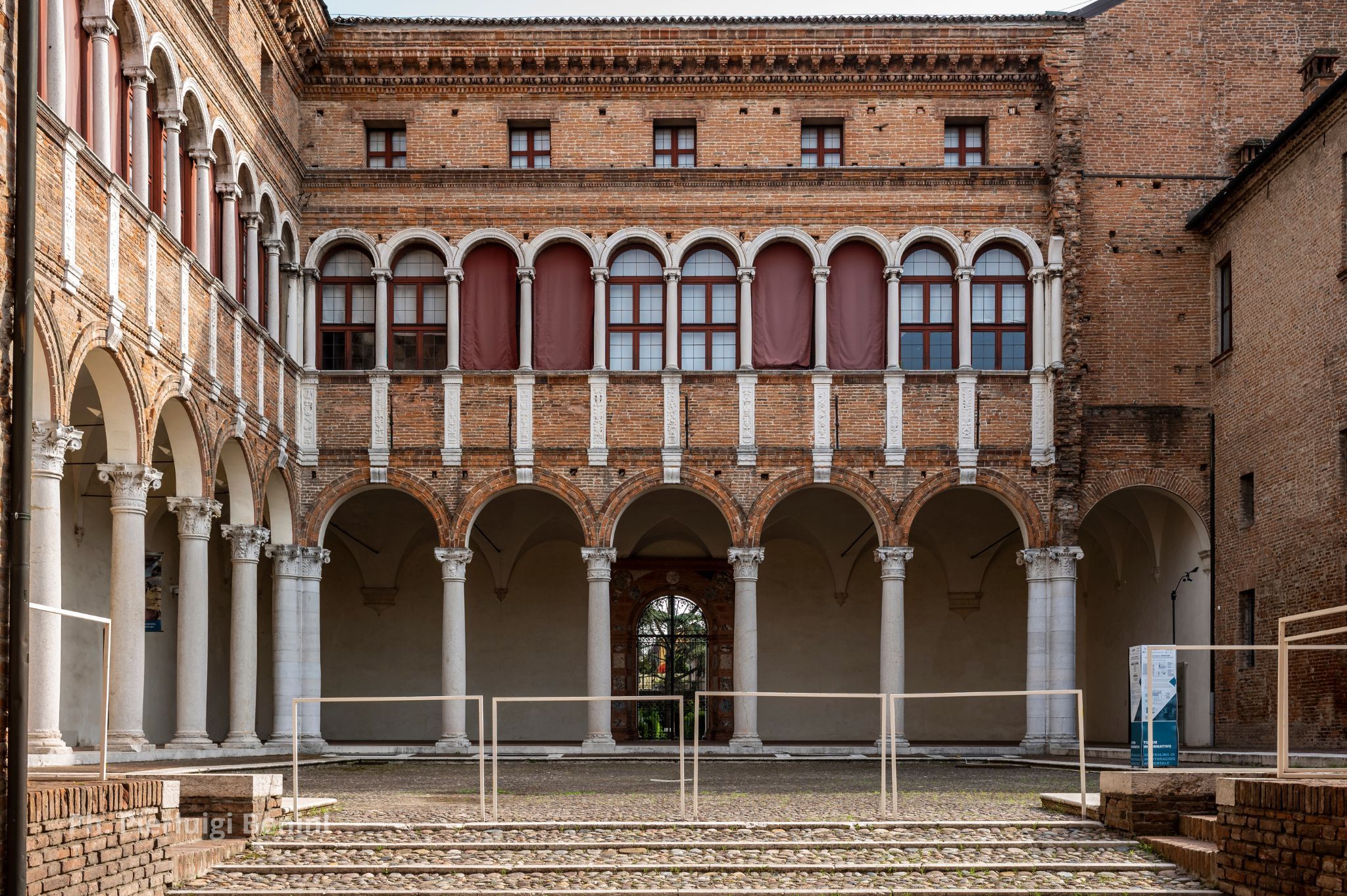
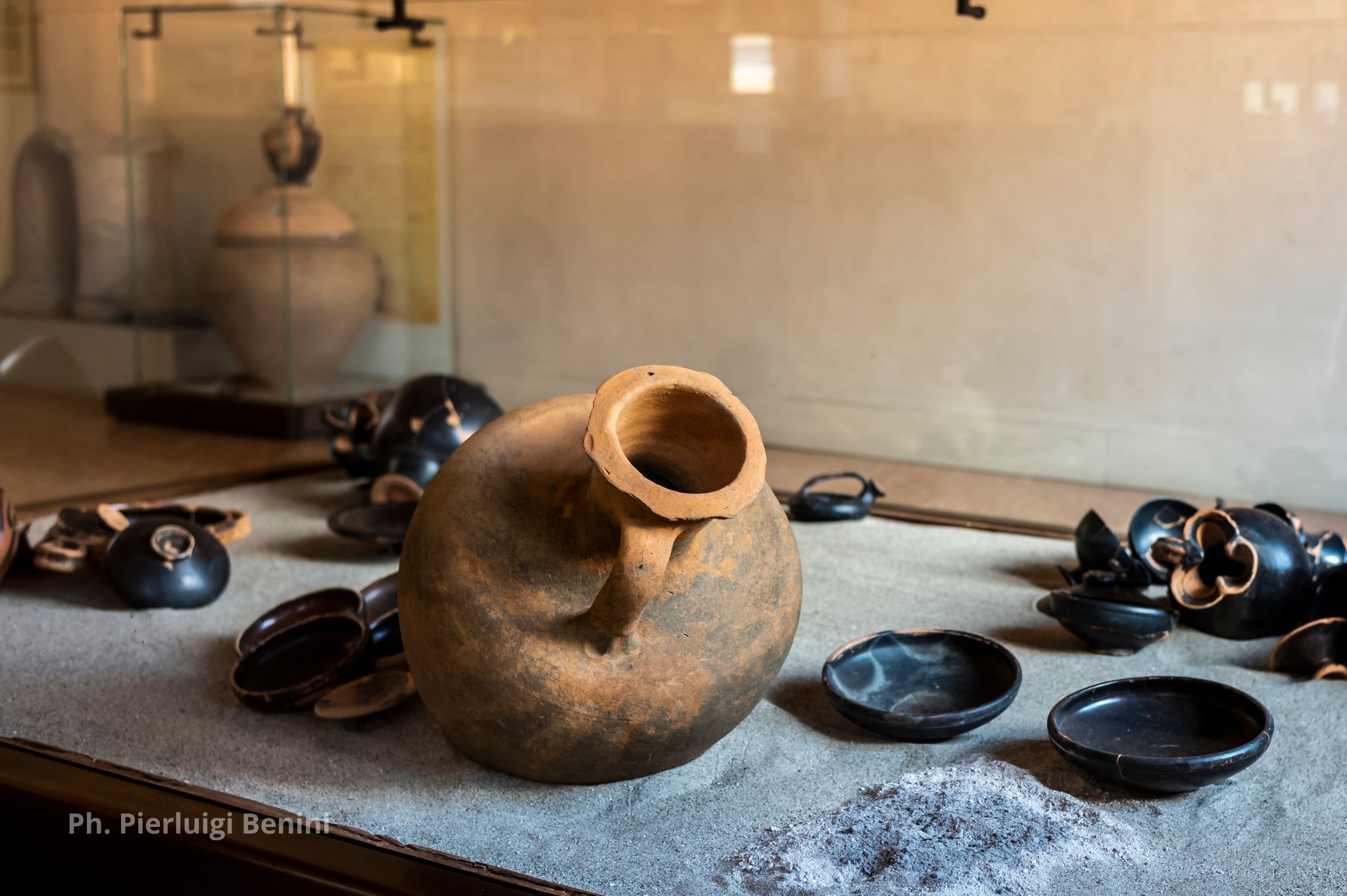
PALAZZO SCHIFANOIA
At the entrance to Palazzo Schifanoia you can admire a strange coat of arms surmounted by a bizarre figure: a unicorn. The unicorn was in fact the heraldic symbol used by the Este family to depict their land reclamation works. It was usually depicted with its head bowed and its horn in the water. Inside the palace, you can discover the history of the Este government through the rooms of Borso's favorite recreational residence.
After discovering Ferrara's political relationship with water, we leave this area of the city and head towards the center.
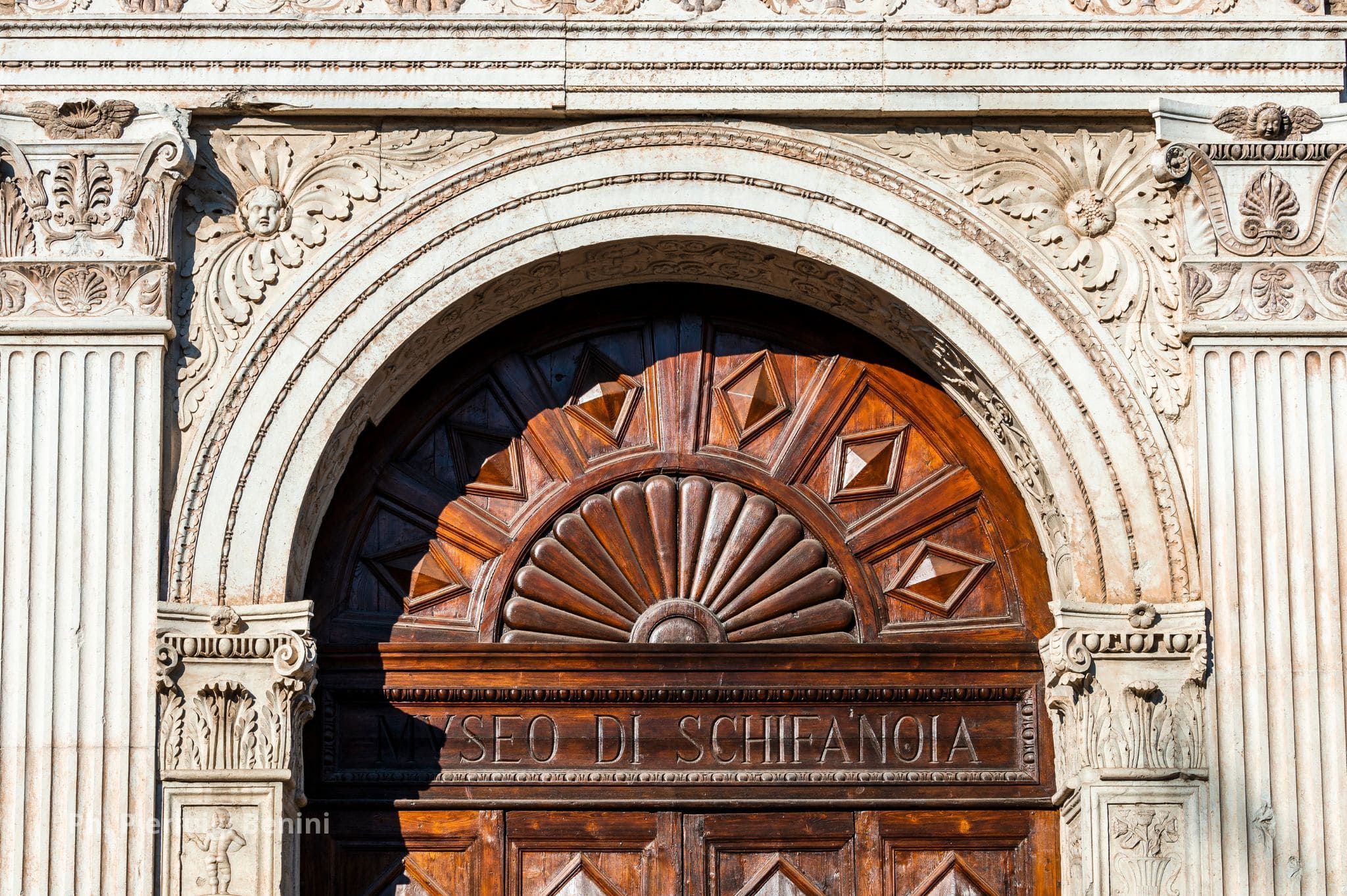
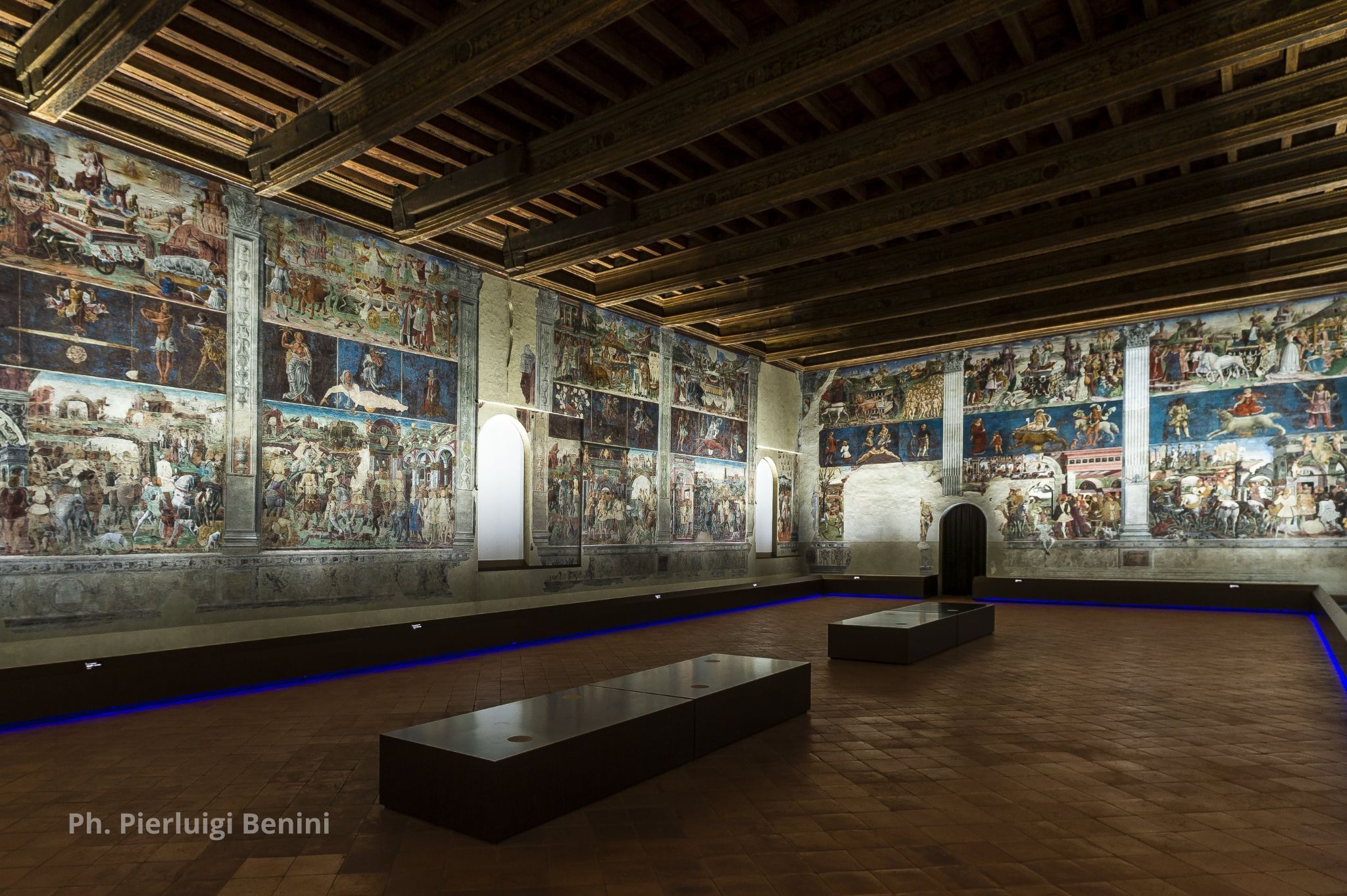
THROUGH THE MEDIEVAL CENTER TOWARDS THE PIAZZA
To reach Piazza Trento e Trieste, you can choose from several streets that make up the medieval center of the city. If you choose to walk up Via Carlo Mayr or Via Coperta and Via delle Volte, you will notice the particular line that these streets trace. In fact, these streets carry in them the memory of the ancient river bed, which once flowed along today's via Baluardi.
Once in the Piazza you will find another sign of the passage of water in our city: the Padimetro, placed in a column in Piazza Savonarola, marks the water levels during the maximum floods of the river since 1700.
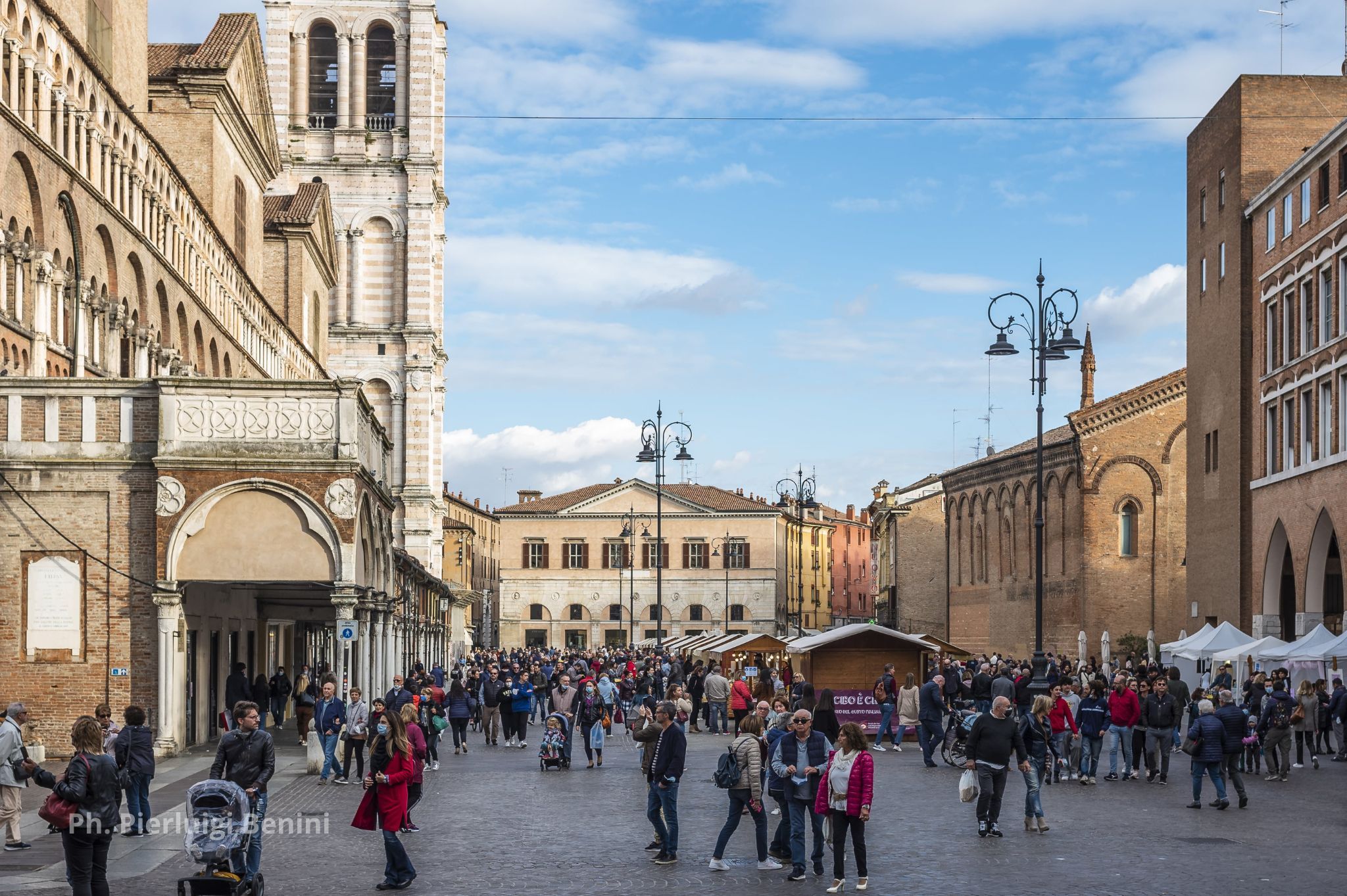
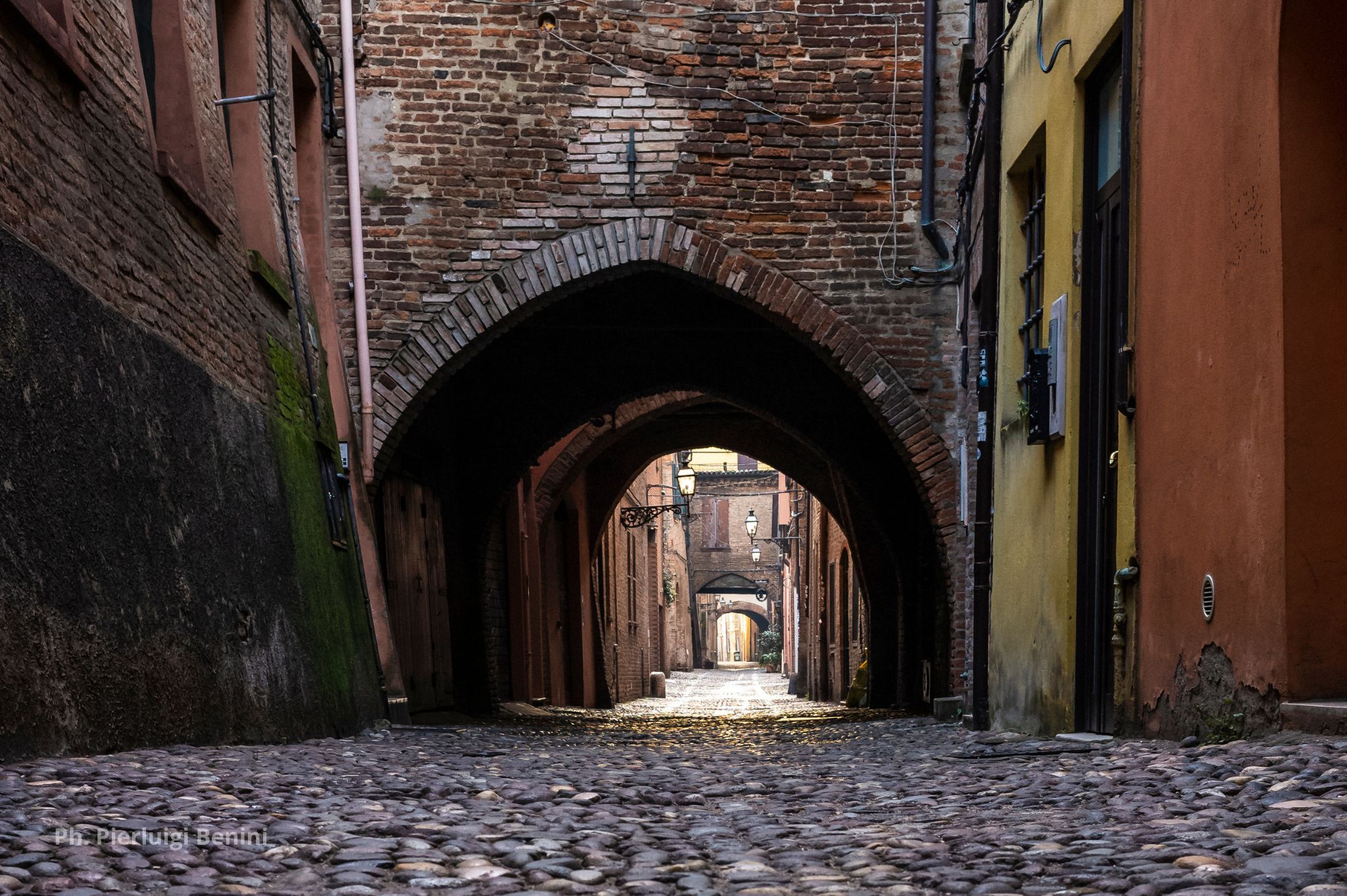
THE CASTLE
At this point we have come to the last stop on our city tour. It is right in front of you: the majestic castle that has made water its characteristic defensive sign. Surrounded by a moat, the Castello Estense stands in the middle of the city center.
As you wander through the rooms of the castle, you will be able to see, among the many treasures, maps showing the importance of water for our territory since ancient times.
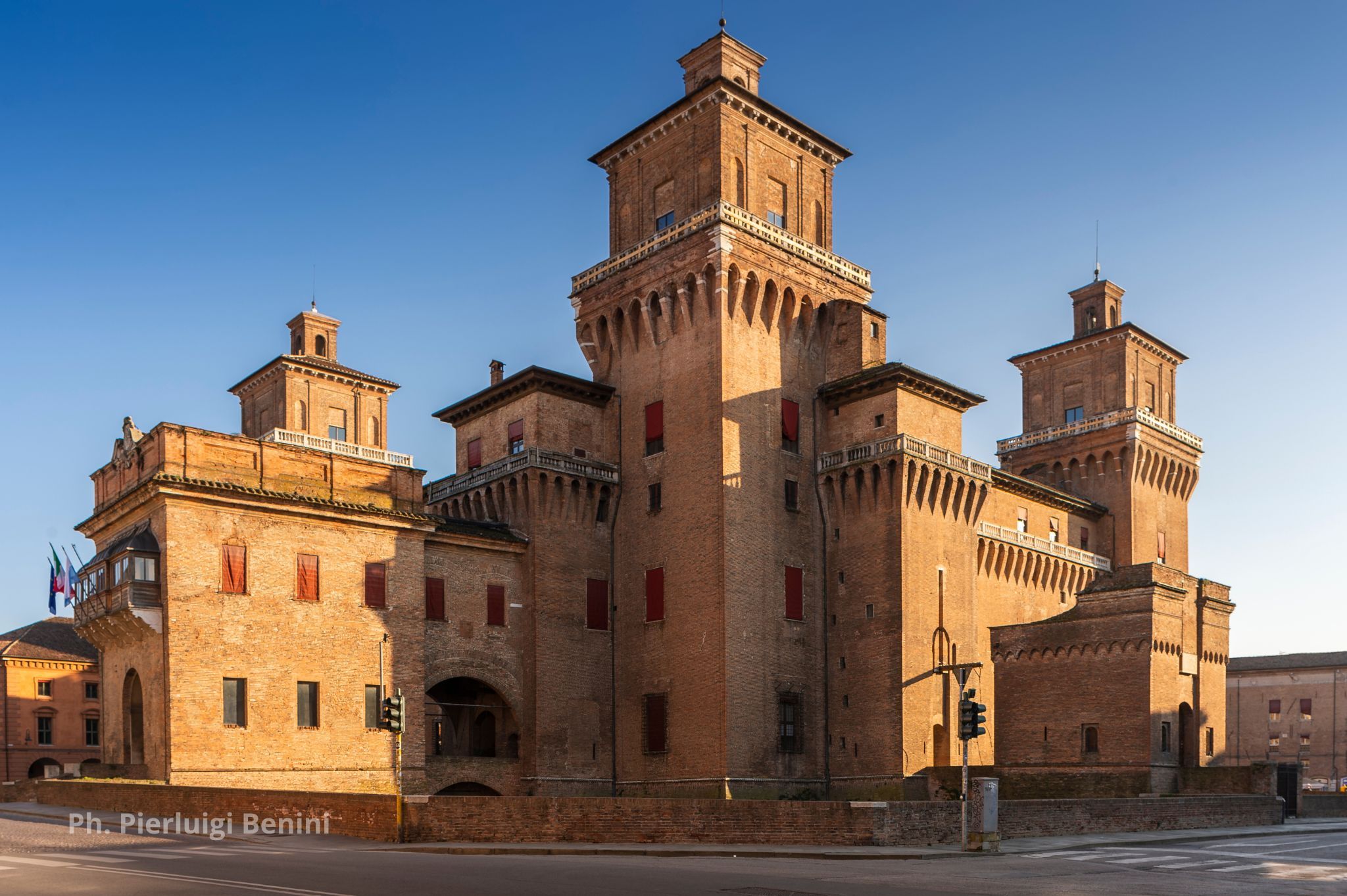
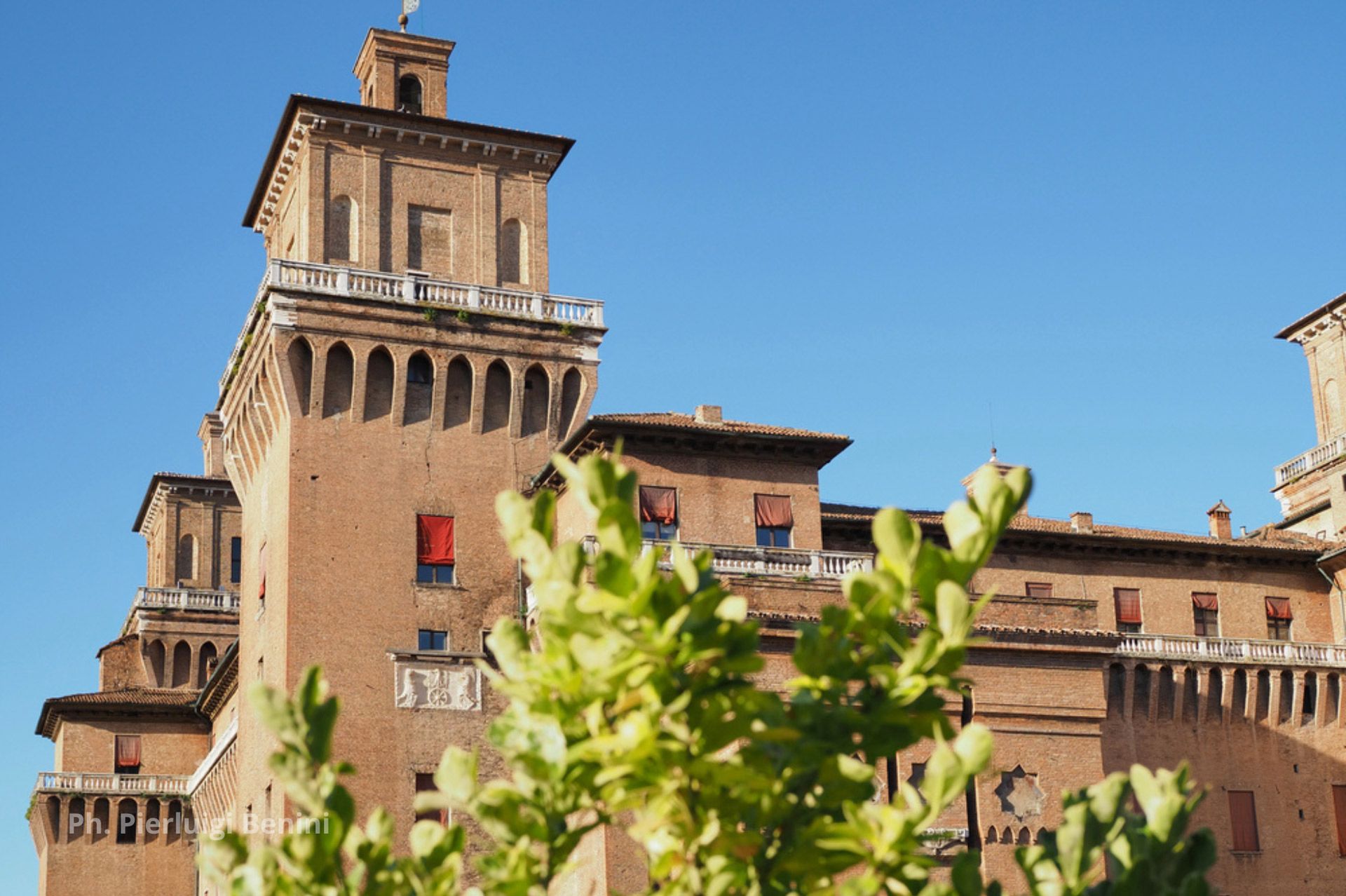
Here we end our itinerary following the traces of water in Ferrara. But in Ferrara, water is much more: it is a fundamental element of everyday life in Ferrara. Historically, water means relationships, exchange and culture. It has been a source of inspiration for many and the central element of many lives: if you come and visit us, you too can see the importance of this relationship!

